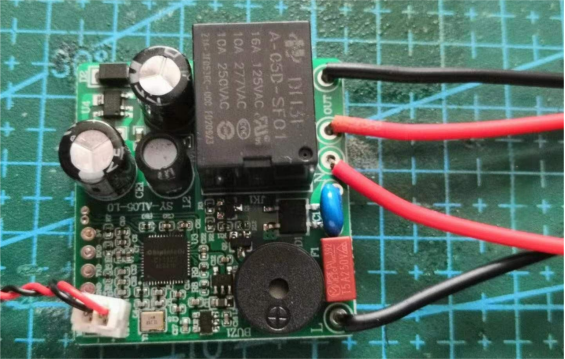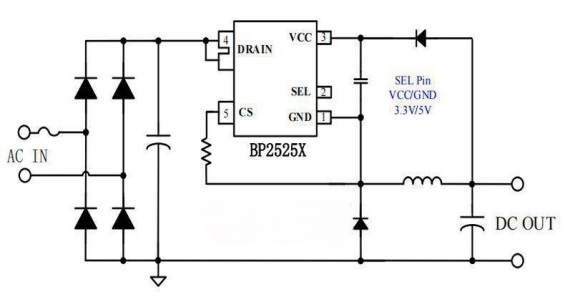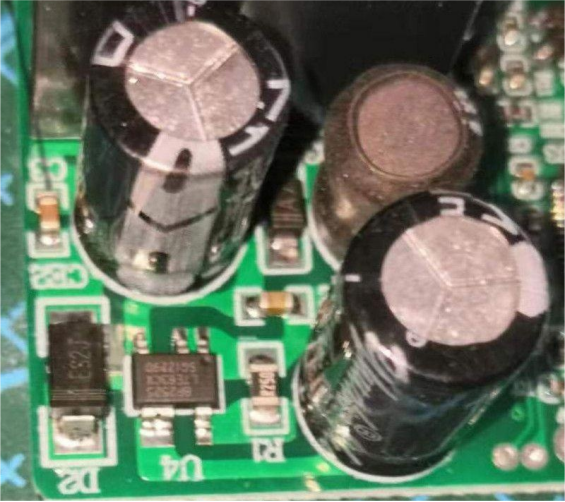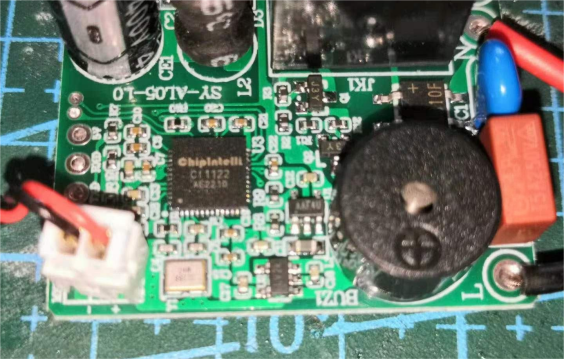
If you're interested in using an offline smart voice control module to DIY and upgrade your balcony light, this article might be worth a read.
If your balcony only has wiring for a single ceiling light, and after installing a motorized clothes rack the lighting now depends on the two spotlights on the rack — but those lights can only be controlled by the rack's remote, which makes daily use super inconvenient — then you can follow this guide to DIY a balcony light upgrade.
You'll need an offline voice control module like the one shown below.

This module mainly consists of three parts.

The first part is the power supply section.
It takes a 220V AC input, goes through a resistor-capacitor step-down and full-bridge rectifier, and then the BP2525 chip provides two voltage outputs (3.3V and 1.2V) for the main control chip CI1122.
The BP2525, developed by Bright Power Semiconductor, is a non-isolated BUCK chip with ultra-low standby power consumption and a fixed 3.3V/5V output. It integrates a 500V power switch, doesn't require external loop compensation capacitors, saving cost and space. It's mainly used as an auxiliary power source for Wi-Fi, Bluetooth modules, smart plugs, and relay circuits.


The second part is the voice control circuit.
The main controller here is the CI1122 chip from Chipintelli.
The CI1122 is typically used in smart home appliances, smart toys, smart lighting, and smart remotes.
Chip features:
· Neural Network Processor (BNPU)
· Handles neural network operations via hardware
· Configurable core that independently processes AI voice functions
· Supports local (offline) voice recognition
· Supports VAD (Voice Activity Detection)
· CPU
· 180MHz operating frequency
· 32-bit single-cycle multiplier
· Memory
· Built-in 512KB SRAM
· Built-in ROM
· Built-in 4MB Flash
· Audio Interface
· Integrated high-performance, low-power Audio Codec
· Supports single-channel ADC recording and DAC playback
· Supports Automatic Level Control (ALC)
· Supports 8kHz/16kHz/24kHz/32kHz/44.1kHz/48kHz sample rates
· Supports 44.1kHz clock frequency
· Supports one IIS audio expansion channel
· SAR ADC
· 4-channel 12-bit SAR ADC input
· ADC IO pins can be multiplexed with digital GPIO functions
· Peripherals and Timers
· 2 UART interfaces (up to 3M baud rate)
· 1 I2C interface
· 6 PWM interfaces
· 4 sets of 32-bit timers
· 1 independent watchdog (IWDG)
· 1 window watchdog (WWDG)
· GPIO
· Supports up to 27 GPIO pins (function multiplexing)
· Each GPIO supports interrupt configuration
· Supports two external interrupts with filtering

Chip application block diagram as above

The third part is the relay execution circuit — this part is straightforward. It simply connects or disconnects the load circuit.
After installation, you'll need to do a bit of debugging, but the voice recognition is quite responsive.
This module also supports simple reprogramming via voice commands — for example, you can modify control phrases, set the default power-on state, or add delay-off functions.
Now, you can just say "Turn on the light" and the light comes on; say "Turn off the light" and it goes off.

Problem solved.




